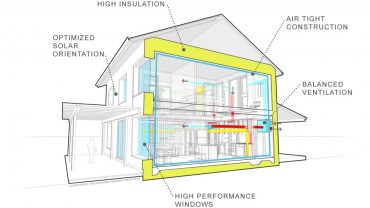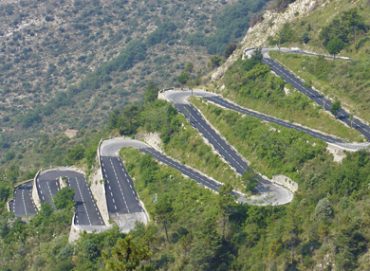
John Bleasby
The Road to NZE (Part Five): Getting ‘there’ from ‘here’
Canadian ContractorAn interview with green builder Ben Polley on our industry's move towards a Net Zero Energy future
Do you plan to be in the home construction industry in 13 years? If so, you might be wise to think about how you will transition your current building methodology to one that will meet the Net Zero Energy Ready (NZEr) building standards likely to rule the country in 2030. Are you an innovator? An early adopter? A follower? A straggler?

Ben Polley, co-founder of Evolve Builders Group
One of Canada’s leading energy-efficient home builders, Ben Polley of Evolve Builders Group Inc., feels the easiest path for most builders might be the Passive House approach. Polley should know; he’s started down The Road to NZE years ago. In the final installment of this series, Canadian Contractor, asks Polley critical questions that might move builders off the fence of indecision.
There are many standards and certifications out there: LEED, BuiltGreen, NZE, R-2000, EnerGuide and ENERGY STAR, Passive House, and Living Building Challenges. Is it all too muddled to gain traction with consumers and builders?
Think of it like the organic food industry. If we were to jump back in time, say 20 years, the bulk of organic foods were sold through mom-and-pop shops and other non-traditional retailers. They were early adopters and brought forward what was a nascent industry. Over time and through standardization they started to change the larger retailers, and in turn were bought up by the larger retailers, or became larger retailers themselves. The same sort of thing is happening in construction under these various certifications. Some are going to survive and some will fall away. However, ultimately each of them has contributed something to the path we are taking. If not for those certifications providing some guidance and a marketing tool for production builders, I don’t think we would have seen the market shift as it is now.
As energy-efficiency awareness increases, how has it impacted innovators such as you?
What I have observed is whereas 15 years ago I would have to spend a significant amount of time educating people on why they might want to consider specific upgrades because of certain energy saving outcomes, the reverse is now true. They’re now coming to us with an expectation at the outset of Net Zero or Passive House levels.

A Passive House is one that reduces energy demand at the outset, thus requiring less complicated and costly heating and cooling solutions
You have said in the past that Passive House concepts are a key starting point. Why is that?
If you don’t deal with the energy efficiency issue at the source of the problem, you’re spending more money to put in more expensive equipment. Energy demand will still be high and you’ll be trying to deal with it by using fuel-based solutions. Our clients are really keen on reducing demand at the start. They are most are interested in Passive House principles such as extraordinary insulation, but with particular attention to air barrier detailing to prevent losing heat in the winter or cool in the summer. Those things are non-mechanical and have one-time initial costs which are quantifiable. All they ever do afterwards is save money.
How has increased awareness changed the discussion of costs versus benefits with your clients?
It has changed the conversation, changed mindsets. Our clients all have very different expectations from site to site. However, increasingly and over the last 18 to 24 months, the starting point requested by clients is Passive House or Net Zero. Only if we can’t achieve that within their budget does it start dropping away.

The Road to Net Zero Energy might seem full of twists and turns, however Polley feels Passive House concepts are a great place to start
If the various certifications are due for a shake-out, how about a shake-out of builders themselves, particularly the stragglers?
We understand that the province of Ontario wants to bring all new home construction to Passive House NZE-ready standards by 2030, less than 13 years from now. That probably means many of the builders you describe as ‘stragglers’, people who have been in the industry so long that they don’t care to change, will be gone by that point through attrition. They can’t exist. Even the followers really can’t exist. The youth we’re seeing coming into the trades want to be early adopters or innovators and have a real interest in non-conventional building and better methods. The problem they encounter more often is that their teachers don’t know how to do it.
Are the various energy-efficiency building courses available something all should consider, even a builder as advanced as your company?
A few of us here recently took the certification course required to be Passive House builders. After the first day, I was disappointed; I was expecting some fairy dust to be sprinkled on me. However, on the second day I started to realize that we were very, very close, and that the incremental costs of change would be low. And that’s the point regarding innovators and early adopters; if they’re already doing a lot of these things, the change is going to be so shockingly little and surprisingly effective. I came back to the office feeling newly energized. It was very exciting to learn all these things that are out there of which I was not aware that are hugely impactful and easy to deploy.
For a innovative builder like you, determined to stay ahead of the pack, is Net Zero Energy really enough?
Going forward, I feel we are moving so quickly towards the concept of Net Zero Energy that the terms of reference will start to change. We will one day soon be talking about Energy Positive homes, those that actually put back more than they take out.
Read our entire series, The Road the NZE
Part One: How whole-house energy ratings are shaping the homes of the future
Part Two: Defeating thermal bridging
Part Three: New window technology deliver big R-value gains
Part Four: The ‘System Approach’ to insulation
Learn more about ratings, certifications and building courses
Passive House concepts
Net Zero Energy concepts
LEED home building
EnerGuide ratings for homes
BuiltGreen homes
R-2000 homes
Living Building Challenges
Follow John on Instagram and on Twitter for notifications about our newest posts
Advertisement
Print this page


We have just built a house to passive house standards and have put a balanced ventilation system in. I can not tolerate the sound that the HRV makes. The ducting in the house carries the sound of the motor through the house and also transmits sound from one room to another. There must be a system out there that does not make such a noise? The contractor says if I don’t like the noise don’t use the HRV. BUt as your diagram indicates an HRV is essential to a super insulated home.
Eve: I’d get your mechanical contractor in to have a look. My HRV unit is suspended on straps from the joists above, so the unit cannot reverberate against any stud walls. Is yours? Also, your unit should have variable speeds you can program from the master keyboard; maybe yours is set for a high speed, hence the noise? Just some random thoughts. The HRV should not be so noisy as to bother you!